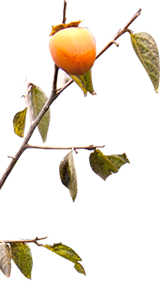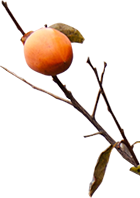The “Revive Time – Kaki Tree Project” head office has a lot of treasures. These are artworks created by people and children around the world for the seedlings of the bombed kaki tree. The exhibition “KAKI STORY 1995-2012 —Kaki Tree’s Journey to Connect and Spread—” held this summer to celebrate the launch of “The Story of the Kaki Tree” invited those works to play the leading role and conveyed aspirations for peace and life energy from around the globe.
Even the long-time executive committee members have never seen some of the works. What seemed to be common were that they were created based on “a good understanding of the bombed kaki tree” and were “expressions that had emerged spontaneously and freely from the inside of children and are free from a conventional concept of art ‘should be like this’.” Children’s works are colorful and using amusing lines and shapes. However, they are not just only ‘cute.’ They express their aspirations for peace with the hopeless situation that the bombed kaki tree has gone through in mind.
Human-shape ornaments, which children created at the workshop of Avignon, France, are life-size and movable – interesting works. They do not have heads; however, the bodies are composed of newspaper articles of bombing strikes, atomic bombings and wars. Children in Varese, Italy read poems that passionately express their admiration and respect for the kaki tree that survived the atomic bombing. We were also told that a boy on Burano Island, Italy had made a kaki-fruit shape box packed with his mementos of the kaki tree and pleasant memories all of a sudden one day. Earlier, he was a boy who could not actively involve in anything; however, he had changed since he encountered the kaki tree.
The exhibition was held in a gallery with two rooms, a large and small. In the small room, many photos that were taken at the planting sites around the world were on display. Visitors could see the actual trees and children who enjoyed having contact with the trees in these photos. In the large room, children’s works were displayed as if they were surrounding the slender symbolized tree-like object which reminded us of the young seedling of the bombed tree. On the wall behind the object, the message cards created at the Venice Biennale Exhibition made up a tree with a large trunk like the mother kaki tree. Colorful birds created by children on Burano Island were flying between these trees. A boy told us that he “felt like he was in the woods,” as he obviously felt a unique atmosphere in the venue.
Many talk events, workshops, and performances were held here during the exhibition period. Many children and adults filled the venue, and they wrote messages of dreams and hope and placed them on the tree symbol. It was as if the tree would have been quickly bearing fruit, and symbolizing the tree’s strong growth surrounded by love.




